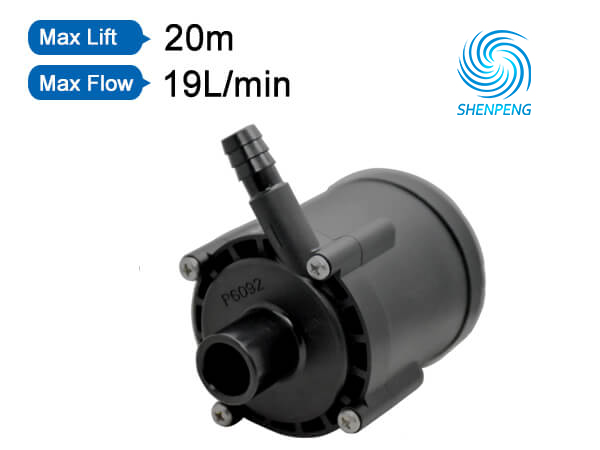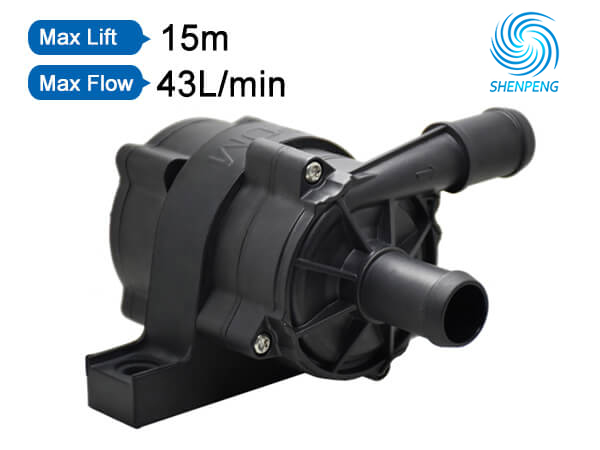What Is a BLDC Water Pump? A Comprehensive Guide
Published:2025-08-04

In the realm of fluid dynamics and motor technology, BLDC water pumps have emerged as a game-changer, revolutionizing efficiency and reliability across industries. But what exactly is a BLDC water pump, and how does it differ from traditional pumping systems? This guide breaks down the essentials, from its core components to real-world applications, helping you understand why it’s becoming the go-to choice for modern engineering.
Defining BLDC Water Pumps
A BLDC (Brushless Direct Current) water pump is a fluid transfer device powered by a brushless DC motor. Unlike traditional pumps with brushed motors, BLDC pumps eliminate mechanical brushes, relying instead on electronic commutation to control motor operation. This fundamental design shift delivers significant advantages in terms of longevity, energy efficiency, and performance—traits that make it indispensable in both industrial and consumer applications.
Core Components of a BLDC Water Pump
To understand how BLDC water pumps work, let’s examine their key components:
1. Brushless DC Motor
The motor consists of a stator (stationary coil windings) and a rotor (permanent magnets). Without brushes, there’s no physical contact between moving parts, reducing wear and tear. Hall effect sensors or sensorless algorithms (using back electromotive force) detect the rotor’s position, guiding the controller to switch currents in the stator windings—generating rotational force.
2. Pump Housing & Impeller
The pump body encloses an impeller, which is directly connected to the motor’s rotor. As the impeller spins, it creates centrifugal force, drawing fluid into the inlet and pushing it out through the outlet. Materials like PPS (Polyphenylene Sulfide) or stainless steel are often used for durability, especially in corrosive environments.
3. Electronic Controller
This brain of the system regulates voltage, current, and motor speed. Advanced controllers use algorithms like FOC (Field-Oriented Control) to optimize efficiency, allowing precise flow rate adjustments—critical for applications like thermal management in EVs or medical equipment.
How Does a BLDC Water Pump Work?
The operation sequence is straightforward yet efficient:
1. The controller receives a signal (e.g., from a thermostat or sensor) to start or adjust the pump.
2. It energizes the stator windings in a specific sequence, creating a rotating magnetic field that interacts with the rotor’s permanent magnets.
3. The rotor spins, driving the impeller to move fluid through the pump housing.
4. Feedback from Hall sensors or back-EMF ensures smooth, continuous operation, adapting to load changes in real time.
This electronic commutation eliminates sparking (a issue with brushed motors) and enables variable speed control, making BLDC pumps ideal for applications requiring precise flow management.

BLDC vs. Brushed Water Pumps: Key Differences
Feature | BLDC Water Pump | Brushed Water Pump |
Lifespan | 10,000+ hours (no brush wear) | 1,000–3,000 hours (brush erosion) |
Efficiency | 70–90% (higher at variable speeds) | 50–60% (drops at low speeds) |
Maintenance | Minimal (no brush replacement) | Frequent (brush and commutator upkeep) |
Noise Level | Low (no mechanical friction) | High (brush contact noise) |
Control Precision | Excellent (digital speed tuning) | Limited (fixed or basic adjustment) |
These differences explain why industries from automotive to manufacturing are rapidly adopting BLDC technology. For example, Tesla’s Model 3 uses BLDC water pumps in its thermal management system to maintain battery efficiency—cutting energy loss by up to 40% compared to brushed alternatives.
Common Applications of BLDC Water Pumps
BLDC water pumps excel in scenarios demanding reliability, efficiency, and adaptability:
• Automotive: Cooling EV batteries and powertrains.
• HVAC: Circulating water in heat pumps and chillers.
• Medical: Precise fluid control in dialysis machines and diagnostic equipment.
• Consumer Electronics: Water-cooled PC systems and smart home appliances.
• Industrial Machinery: Hydraulic systems and coolant circulation in manufacturing lines.
Their ability to operate on low-voltage DC power (12V–48V) also makes them suitable for compact, energy-sensitive setups, such as portable cooling units or embedded systems.
Why Choose a BLDC Water Pump?
The primary advantages boil down to three factors:
1. Longevity: No brushes mean less wear, reducing replacement costs.
2. Energy Savings: Higher efficiency translates to lower electricity bills—critical for large-scale operations.
3. Flexibility: Variable speed control allows customization for specific flow and pressure needs.
As global regulations tighten on energy consumption (e.g., EU’s ErP Directive), BLDC water pumps are no longer an option but a necessity for compliance and cost savings.
Final Thoughts
BLDC water pumps represent the future of fluid handling, blending cutting-edge motor technology with practical design. Whether you’re upgrading an industrial system or selecting components for a new project, understanding their mechanics and benefits is key to making an informed decision. With ongoing advancements in sensor integration and AI-driven control, their role in sustainable engineering will only grow—solidifying their position as a cornerstone of modern fluid dynamics.
- Distribution in Water Heater Mattresses: Why BLDC Pumps Ensure Uniform Heating
- How BLDC Pumps Ensure Precise Flow in Water Dispensers
- Why BLDC Pumps Are Essential for Smart Toilets
- The Critical Role of Automotive Electronic Water Pumps in New Energy Vehicle Battery Thermal Management
- Noise Control Technology for Smart Toilet Water Pumps: Enhancing Quiet Operation in Modern Bathrooms
- Unveiling the Working Principle of Automotive Electronic Water Valves
- Comparative Analysis of Liquid-Cooled Pumps vs. Air-Cooled Systems for EV Charging Stations
- Technical Application of Brushless DC Motors in Energy Storage Circulation Pumps
- Water Heater Pump: Efficiency Upgrade for Low-Voltage Systems
- How Dishwasher Water Pumps Enhance Cleaning Coverage Through Stable Operation?
